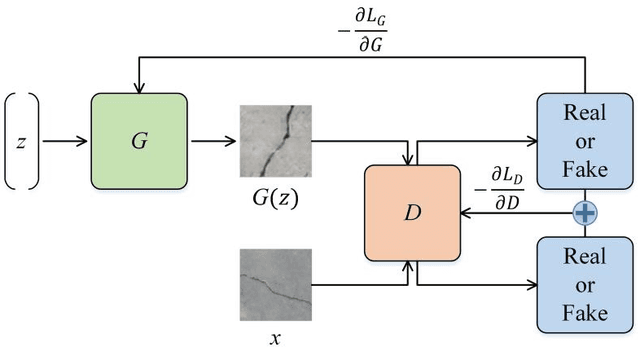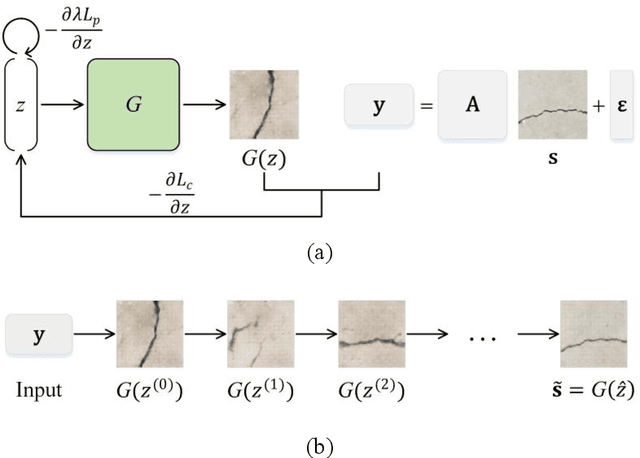Recovering compressed images for automatic crack segmentation using generative models
Paper and Code
Mar 06, 2020



In a structural health monitoring (SHM) system that uses digital cameras to monitor cracks of structural surfaces, techniques for reliable and effective data compression are essential to ensure a stable and energy efficient crack images transmission in wireless devices, e.g., drones and robots with high definition cameras installed. Compressive sensing (CS) is a signal processing technique that allows accurate recovery of a signal from a sampling rate much smaller than the limitation of the Nyquist sampling theorem. The conventional CS method is based on the principle that, through a regularized optimization, the sparsity property of the original signals in some domain can be exploited to get the exact reconstruction with a high probability. However, the strong assumption of the signals being highly sparse in an invertible space is relatively hard for real crack images. In this paper, we present a new approach of CS that replaces the sparsity regularization with a generative model that is able to effectively capture a low dimension representation of targeted images. We develop a recovery framework for automatic crack segmentation of compressed crack images based on this new CS method and demonstrate the remarkable performance of the method taking advantage of the strong capability of generative models to capture the necessary features required in the crack segmentation task even the backgrounds of the generated images are not well reconstructed. The superior performance of our recovery framework is illustrated by comparing with three existing CS algorithms. Furthermore, we show that our framework is extensible to other common problems in automatic crack segmentation, such as defect recovery from motion blurring and occlusion.
 Add to Chrome
Add to Chrome Add to Firefox
Add to Firefox Add to Edge
Add to Edge